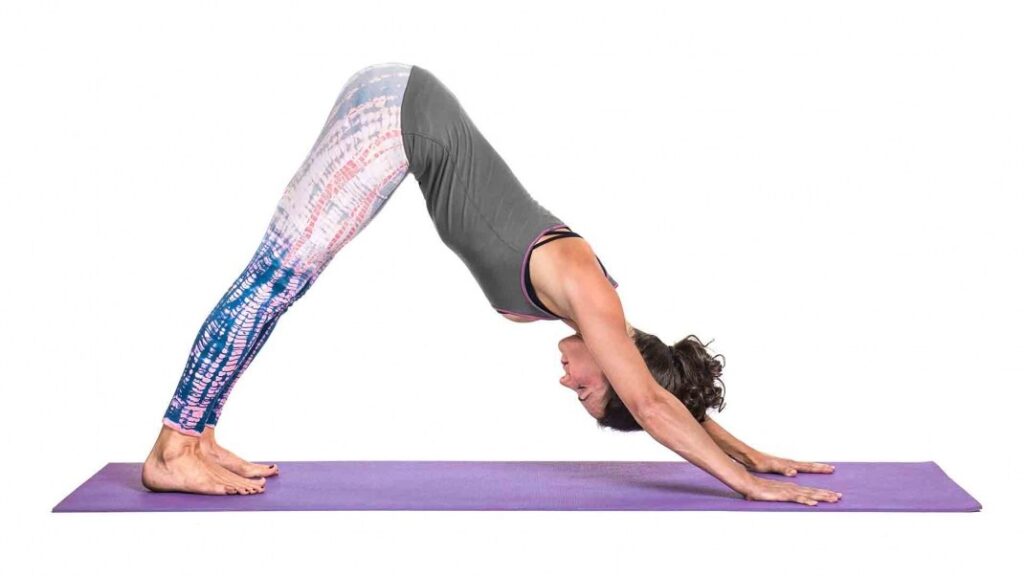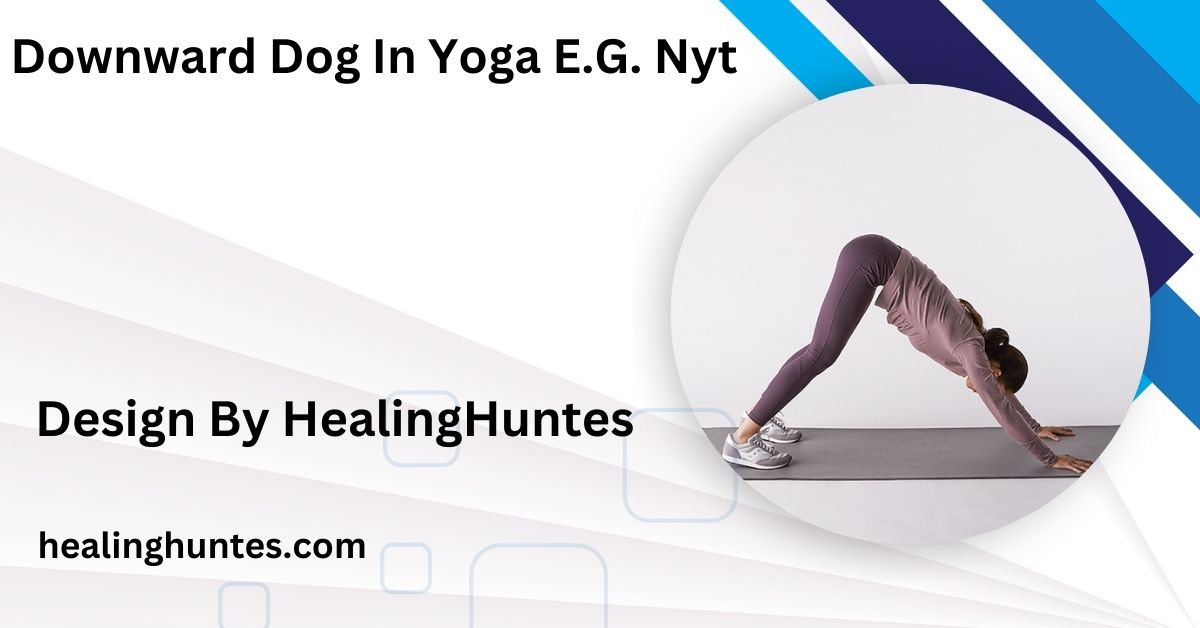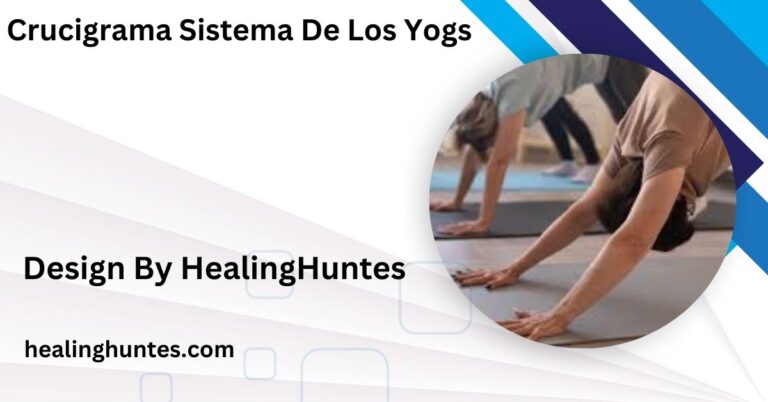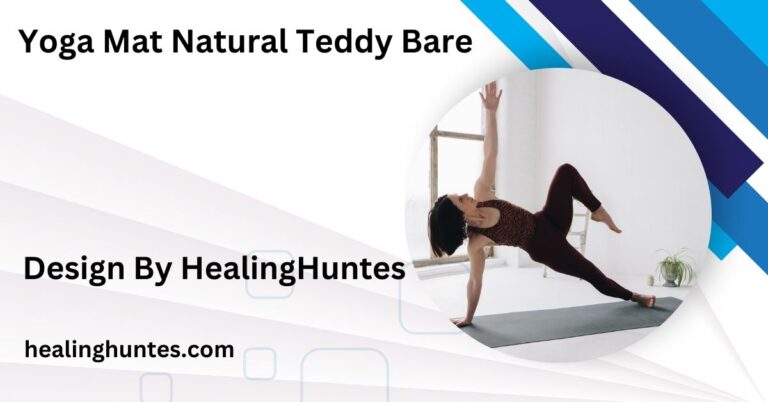Downward Dog In Yoga E.G. Nyt – Beginner’s Guide To Downward Dog!
Downward Dog is a foundational yoga pose resembling an inverted “V.” It strengthens the upper body, enhances flexibility, boosts circulation, relieves back pain, and calms the mind.
In this comprehensive guide, we’ll explore the benefits, how to perform the pose, common mistakes, tips for beginners, advanced variations, and ways to integrate it into your daily practice.
What is Downward Dog?

Downward Dog is a forward-bending, weight-bearing pose that resembles an inverted “V.” It stretches and strengthens multiple parts of the body, providing a full-body workout while calming the mind. Found in almost every yoga sequence, from beginner to advanced levels, this pose acts as a transitional posture, a resting pose, and even a mild inversion.
How to Perform Downward Dog:(Step-by-Step Guide)
- Start in Tabletop Position: Begin on your hands and knees, ensuring your wrists align with your shoulders and your knees are directly below your hips.
- Tuck Your Toes: Curl your toes under, preparing to lift your hips.
- Lift Your Hips: Push your hips upward and back, forming an inverted “V” shape.
- Straighten Your Legs (If Possible): Keep your heels reaching toward the floor. It’s okay if they don’t touch the ground.
- Engage Your Core: Draw your belly button inward to protect your lower back and maintain stability.
- Distribute Weight Evenly: Press firmly through your palms and fingertips while grounding your feet.
- Relax Your Neck and Shoulders: Let your head hang freely, gazing toward your thighs or knees.
The Key Benefits of Downward Dog:
Downward Dog isn’t just a pose; it’s a powerhouse of physical and mental benefits:
Enhances Flexibility:
This stretch targets the hamstrings, calves, and spine, enhancing overall flexibility and mobility. By loosening tight muscles, it supports better posture and promotes ease of movement in daily activities and workouts.
Improved flexibility prepares the body for more advanced poses or exercises, ensuring optimal performance. Additionally, it helps prevent injuries by reducing muscle stiffness and promoting balanced muscle engagement.
Also Read: Crucigrama Sistema De Los Yogs – Sistema Yogs Guide!
Strengthens the Upper Body:
This exercise is excellent for building strength in the arms, shoulders, and wrists while enhancing overall upper body endurance. By engaging the abdominal muscles, it also develops core stability, which is essential for balance and alignment during movement.
Regular practice improves resilience in the upper body and promotes better posture. Additionally, it contributes to overall muscular tone and symmetry, ensuring a well-balanced physique.
Boosts Circulation:

Inverting the body increases blood flow to the brain and heart, supporting better oxygen delivery to vital organs for improved function. This movement also stimulates lymphatic drainage, aiding in detoxification and promoting overall health.
Enhanced circulation boosts cardiovascular health, while the increased energy flow refreshes and revitalizes the body. Together, these benefits create a sense of balance and vitality.
Relieves Back Pain:
This practice decompresses the spine, relieving tension and discomfort while promoting better alignment of the vertebrae for improved spinal health. By relaxing surrounding muscles, it helps reduce inflammation and ease soreness, making it highly restorative.
Enhanced spinal flexibility supports long-term back health and resilience. Additionally, it encourages proper posture and ergonomic movement habits, benefiting overall well-being.
Calms the Mind:
Practicing deep breathing and relaxation helps reduce stress and promote a calm, centered mind. By enhancing mental clarity and focus through mindfulness, it fosters a greater sense of presence and awareness.
This soothing effect on the nervous system encourages peace, reduces anxiety, and improves sleep quality. Over time, it supports emotional balance and builds resilience, contributing to overall well-being.
Also Read: Big Boobed Yoga – Yoga for Bigger Breasts!
Why is Downward Dog Essential in Yoga?
Downward Dog serves as a cornerstone in many yoga sequences. Here’s why:
- A Transitional Pose: Acts as a bridge between standing and seated poses.
- A Resting Pose: Provides a break during dynamic sequences like Vinyasa or Ashtanga.
- A Diagnostic Pose: Highlights areas of tension or imbalance in the body.
Common Mistakes and How to Fix Them:

Even experienced yogis can struggle with alignment. Here’s how to avoid common errors:
- Rounding the Back: Keep your spine long by bending your knees slightly and focusing on elongation.
- Collapsing into the Wrists: Distribute weight evenly across your hands and fingers.
- Shrugging Shoulders: Roll your shoulder blades down and away from your ears.
- Locked Knees: Avoid hyperextending your legs; keep a micro-bend in your knees.
Tips for Beginners to Get Started:
If you’re new to yoga, Downward Dog might feel challenging at first. Here are some beginner-friendly tips:
- Use Props: Place your hands on yoga blocks for extra height and support.
- Keep Knees Bent: Prioritize spinal length over straight legs.
- Practice Puppy Pose: A variation that keeps the knees grounded while stretching the upper body.
How to Incorporate Downward Dog into Your Practice?
Downward Dog is incredibly versatile and can be used in various ways:
- As a Warm-Up: Prepares your body for deeper stretches.
- In Sun Salutations: Forms a key component in flow sequences like Surya Namaskar.
- As a Cool-Down: Helps to relax and stretch your body after a rigorous practice.
- For Meditation: Hold the pose for longer while focusing on your breath to calm the mind.
Also Read: Koha Yoga Westport Reap – Holistic Yoga Experience!
Advanced Variations for Experienced Yogis:
Once you’ve mastered the basics, try these variations to deepen your practice:
- Three-Legged Downward Dog: Lift one leg high, keeping your hips square.
- Twisting Downward Dog: Reach your hand to the opposite ankle for a spinal twist.
- Downward Dog to Dolphin: Lower onto your forearms for added shoulder engagement.
Precautions and Contraindications:
While Downward Dog is generally safe, consider these precautions:
- Avoid the pose if you have wrist injuries or carpal tunnel syndrome.
- If you have high blood pressure or are pregnant, consult a yoga instructor for modifications.
- Always listen to your body and avoid straining.
FAQ’s
1. What does Downward Dog target in the body?
It stretches the hamstrings, calves, and spine while strengthening the arms, shoulders, and core, offering a full-body workout.
2. Why is Downward Dog considered essential in yoga?
It’s a versatile pose that serves as a transitional, resting, and diagnostic posture in yoga sequences, suitable for all levels.
3. How does Downward Dog benefit mental health?
The pose encourages deep breathing, reduces stress, and promotes mental clarity, making it a calming practice for the mind.
4. Can Downward Dog help with back pain?
Yes, it decompresses the spine, alleviates tension, and improves posture, providing relief from back discomfort.
5. Are there any precautions for practicing Downward Dog?
Avoid it if you have wrist injuries, high blood pressure, or are pregnant without modifications. Always practice with proper alignment to prevent strain.
Conclusion
Downward Dog is a key yoga pose with many benefits for the body and mind. It improves flexibility, builds strength, boosts circulation, relieves back pain, and reduces stress. Whether you’re a beginner or advanced, this pose is essential for any yoga practice. With proper alignment and care, it can greatly enhance your overall well-being.






